
Priit Loog on Eestis teada-tuntud näitleja, kes tiheda teatrimaailma kõrvalt hoiab tänavatel „meeled valla ja silmad lahti“ ning püüab kinni ka põnevaid kaadreid.
Uurisime Priidult kuidas ta tänavafotograafiat enda jaoks mõtestab, milline on tema jaoks hea pilt ning mida soovitaks algajatele tänavafotograafidele.
English below
Enamik inimesi teab sind ilmselt teatrilavalt või kinoekraanilt. Millal ja kuidas sa enda jaoks tänavafotograafia avastasid?
See juhtus kuidagi orgaaniliselt. Umbes kuus aastat tagasi taasavastasin endas peidus olnud fotopisiku, seda seetõttu, et perre sündis laps ja soovisin teda veidi mängulisemalt jäädvustada, aga kuna tahtmine pilti teha järjest kasvas ning tegelikult ka huvi kogu fotograafiamaailma vastu, siis leidsingi ennast varsti tänavalt. Ei, mind ei visatud kodust välja! Lihtsalt see oli keskkond, kus alati toimus midagi ja kuhu sain minna kolama, millal iganes soovisin. Selline teraapiavorm.
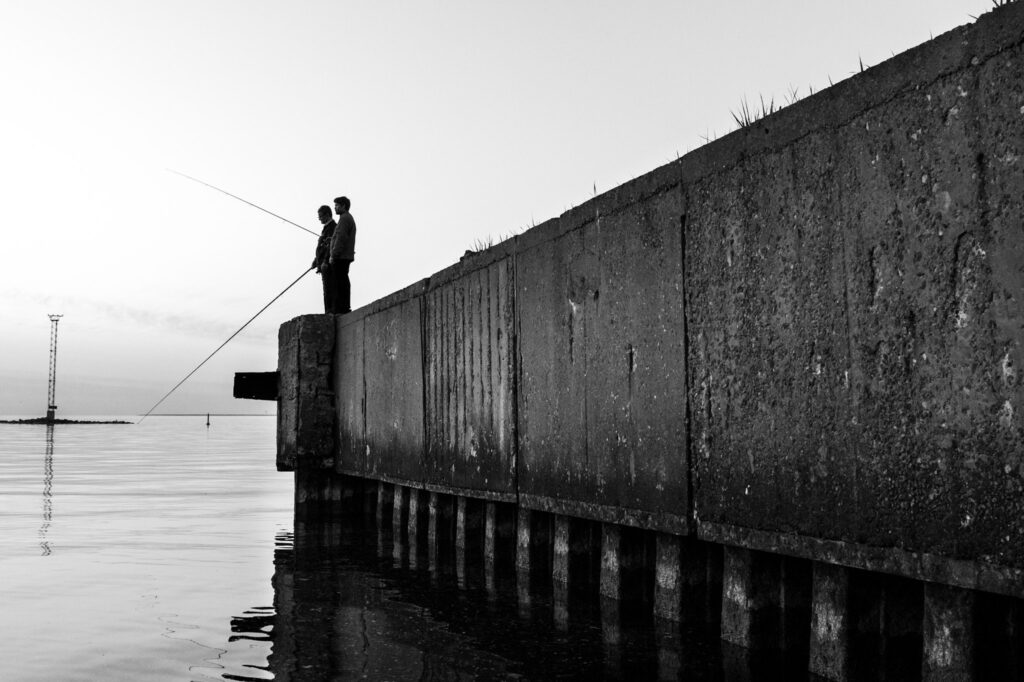
Mis teeb sinu arvates ühe hea tänavafoto? Kuidas seletaksid tänavafotograafiat võhikule?
Alustada ilmselt võikski sellest, et mis see tänavafotograafia üldse on? Minu jaoks kõlaks ilmselt võimalik definitsioon umbes nii – see on fotograafia valdkond, mis püüab jäädvustada ümbritsevat elu-olu urbanistlikus keskkonnas kunstilises võtmes. Fotodel on inimene ja/või inimtekkeline linnakeskkond.
Minu jaoks on hea tänavafoto see, kui ma tajun selget autoripositsiooni, hoolega valitud vaatenurka. Foto, milles puudub ebavajalik “müra”. Lisaks tehniliselt hea teostus ja eriti suurepärane on, kui foto omab suuremat üldistusvõimet, suudab üllatada ja sisaldab ka saladust. Päris palju soovitud, aga väga head fotod ongi harvad.
Pildistad palju oma kodulinnas Pärnus. Mõni võib ehk arvata, et seal pole piisavalt ainest, et head tänavafotot saada (võrreldes nt suurlinnadega). Mida sa neile vastaksid?
Tegelikult on nii, et viimasel ajal, pean häbiga nüüd tänavafotograafia lehel tunnistama, ma eriti tänavafotograafiaks mahti pole saanud. Ei Pärnus ega ka mujal. Osalt tingib selle parajas mahus vaba aja puudumine ja teisalt ka hetkel fotograafilise huvi suunamuutus. Mis aga ei tähenda, et mulle endiselt ei meeldiks aeg ajalt siiski tänavatel uidata ja avara pilguga, fotoaparaat käes, ringi vaadata.
Kuid nüüd siis Pärnus pildistamisest – jah, mõnes mõttes on siin ehk tõesti esmapilgul keerulisem, sest liikvel inimesi, eriti väljaspool suveperioodi, on vähe. Kuid samas sunnivad teistsugused olud, võrreldes suuremate linnadega, ka teistmoodi mõtlema. Selles olen ma küll veendunud, et suurepärast tänavafotograafiat saab harrastada ka väiksemates linnades. Tuleb leida see oma visuaalne keel, oma pilk.

Pildistad palju ka vaikelu ja abstraktsemaid kaadreid. Kas see on ka taotluslik või lihtsalt nii välja kujunenud? Mis sind selles võlub?
Jah, mõnes mõttes võib öelda küll, et nii on välja kujunenud, lähtuvalt enda arengust/otsinguist fotograafiateekonnal, aga tulenevalt ka näiteks kodulinna Pärnu igapäevasest olustikust. See seostub ka osalt eelneva küsimuse ja vastusega – proovida kuidagi teisiti. Mind võlub “kaadri ehitamine”, sättides erinevaid komponente mingisugusesse visuaalsesse tervikusse.
Kes või mis sind fotograafias enim mõjutanud on?
Mu enda kirg ja huvi on ilmselt kõige alus, mis on mind mõjutanud seda maailma avastama. Kindlasti on mind mõjutanud õpetajad, kelle fotokoolitustest olen osa saanud. Kõige suuremal määral ilmselt Kaupo Kikkas.
Lisaks nähtud fotod, näitused, filmid, inspireerivad inimesed jne… kõik mis kuidagi vaimu toidab. Oma osa on ka kindlasti teatrimaailmal, mille sees igapäevaselt olen. Ja muidugi kogemus on väga hea õpetaja ja mõjutaja.

Mida tavaliselt teed ja/või kust inspiratsiooni ammutad, kui tekib n-ö „writers block“ (ajutine, lühiajaline või pikaajaline võimetus loominguga tegeleda – toim)?
Arvan, et siis tulebki endale rahulikult aega anda ning mitte tulemuse saavutamise tuhinas asju tagant kiirustada või ennast piitsutada ja pressida. Võibolla tegeleda fotograafilises mõttes hoopis mingi muu teemaga või siis üldse aparaati mõnda aega mitte kätte võtta. Nii öelda laadida ennast millegi hea ja innustavaga – raamatud, teater, sport, muusika, molutamine jne.
Rääkides tänavafotograafiast siis võib olla päevi või nädalaid, kus “silm on kinni” – võid kolada ja tuhnida ja otsida, aga pilti ei tule… see on protsessi loomulik osa.
Kui palju sa muidu välja pildistama jõuad muude tegemiste kõrvalt?
Kahjuks pean tunnistama, et viimasel ajal suhteliselt harva ja siis kipun ka, praegusel ajahetkel, tegelema muud sorti fotograafiaga kui klassikaline tänavafoto. Eelkõige seetõttu, et üks fotoprojekt on poolik ja tahaksin selle lähiajal n-ö purki saada. See on seotud Pärnu rannatemaatikaga suvitusperioodi välisel ajal.

Kas ja kui palju sa järeltöötlusele panustad?
Tänava- ja dokfoto puhul teen järeltöötluse osas üldjuhul ainult kõige tavapärasemad toimingud – natuke korrigeerin vajadusel säritust, valgustemperatuuri, lõikan veidi pilti, kui tarvis, ja vahel lisan mõnd efekti – kontrasti, tekstuuri, värviküllust.
Lähtun üldiselt konkreetsest fotost ja sellest suunast, mis ta mulle kätte annab, et kuidas mulle meeldiks lõpptulemust näha. Töötluse osas mul vist oma äratuntavat käekirja pole, või ma ei oska seda ise näha ja ma ei ole sellele eraldi ka tähelepanu pööranud. Arvan, et mahukas töötlus ja efektide kasutamine ei tee kehva pilti paremaks, eriti vilunud silma jaoks, kui rääkida tänavafotograafiast.
Oled teinud ka välisreise pildistamise eesmärgil. Kuidas selline kogemus on olnud? Kas su lähenemine sellistel juhtudel on kuidagi erinev sellest, kui pildistad kodumaal.
Jah, olen mõnel korral oma elus ühendanud minipuhkuse tänavafotograafiaga. Kogemus on olnud põnev ja õpetlik. Lähenemine iseenesest ei erine kodus pildistamisest. Ikka üritan hoida meeled valla ja silmad lahti. Aga senise kogemuse pealt on mul tekkinud taju, et kuna ma ei ole nende paikadega seotud nii nagu Eestiga, siis jääb ka seal tehtud fotodel millestki puudu. Mingi kiht on kadunud. See on nagu “võõras maailm”. Ei teagi… Igatahes on minus ka annus missioonitunnet, et kes seda Eestit siis ikka pildistab kui mitte siin elavad fotograafid.

On sul ka algajatele häid nippe jagada?
Esmalt tehniline ABC selgeks ja siis pildista, pildista, pildista, õpi, otsi, leiuta, inspireeru. Proovi olla enda vastu nõudlik! Näiteks, kui silmad “huvitavat” inimest, keda sooviksid kaadrisse püüda, siis ära tee lihtsalt üht kiiret dokumenteerivat kaadrit, vaid proovi olukorda kiirelt hinnata ja mõtle, et kuidas võiks see kaader huvitavam saada.
Jälgi, kuidas on lood valgusega, ehk on ka midagi taustal, mis looks konteksti, äkki on midagi esiplaanil mida kaadrisse jätta ja mis lisaks fotole sügavust. Võibolla saab panna mingid värvid kaasa rääkima, äkki peaksid laskuma madalamale või hoopis tõusma kõrgemale, ehk ei vajagi sa tervet inimest kaadrisse vaid ainult osakest temast, ehk ainult siluett, vari, peegeldus… äkki pole teda üldse fotole vaja, vaid tema seljataga seisev naine on kordades kõnekam…
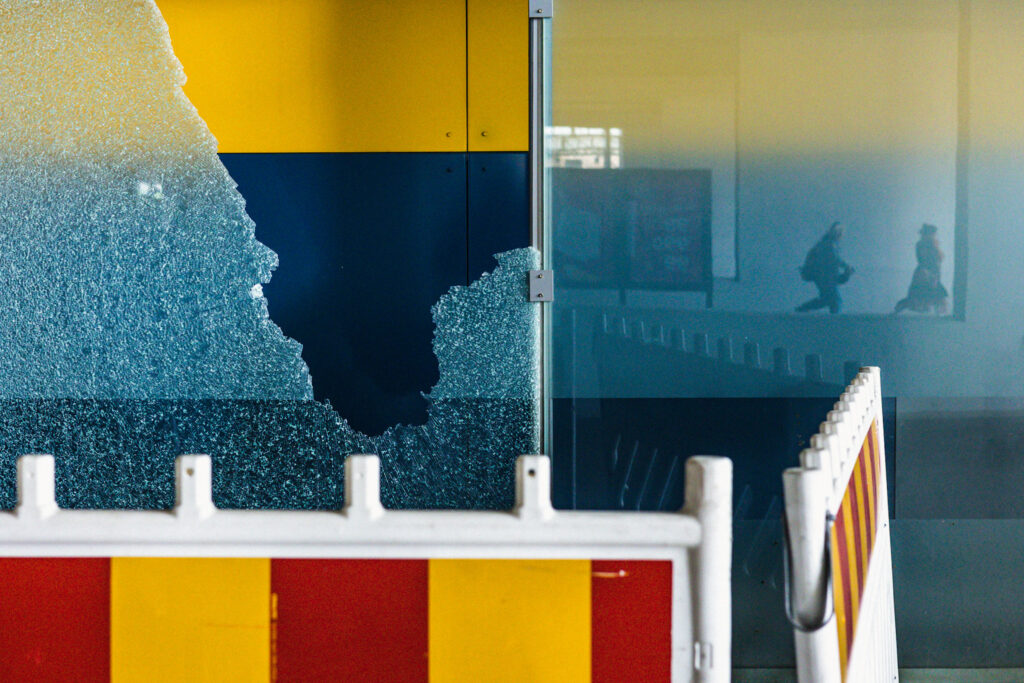
Vaata Priit Loogi fotosid lähemalt Instagrammist.
Priit Loog is a well-known actor in Estonia, who, in addition to the busy theater world, keeps “minds and eyes open” on the streets and captures exciting shots.
We asked from Priit, how and what he thinks of street photography, what is a good image for him and what would he recommend to beginner street photographers.
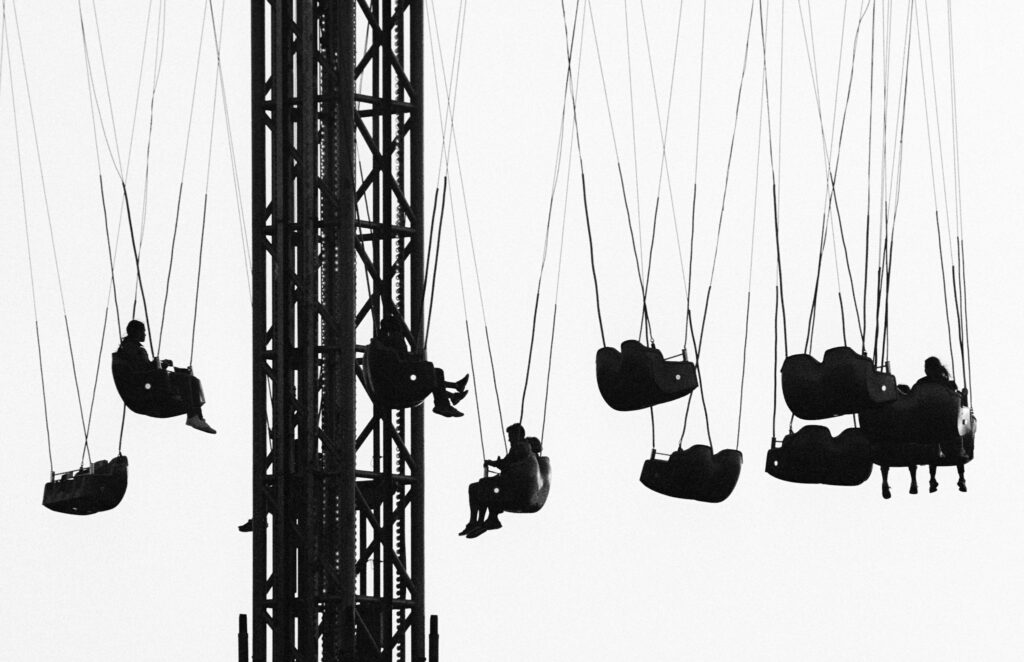
Most people probably know you from theater or cinema. When and how did you discover street photography for yourself?
It kind of happened organically. About six years ago, I rediscovered the hidden photography interest in me, because a child was born into our family and I wanted to capture him more playfully, but as the desire to take pictures grew and actually also the interest in the whole world of photography, I soon found myself on the street. No, I wasn’t kicked out! It was just an environment, where there was always something going on and where I could hang out whenever I wanted. This was like a form of therapy.
What do you think makes a good street photo? How would you explain street photography to an outsider?
You could probably start with what is street photography anyway? For me, a possible definition would probably sound something like this – it is a field of photography that tries to capture the surrounding life situation in an urban environment in an artistic way. Photos will show a person and/or an anthropogenic urban environment.
For me, a good street photo is when I perceive a clear authorial position, a carefully chosen point of view. A photo without unnecessary “noise”.
In addition, a photo should be good technically and it would be great, if a photo has a great generalization ability – it can surprise or contain a secret. It is quite a lot to ask, but very good photos are rare.
You shoot a lot in your hometown Pärnu. Some may think that there is not enough material to get a good street photo (compared to big cities, for example). What would you say to them?
In fact, lately, I have to admit with shame now on the street photography page, I haven’t had much time for street photography. Neither in Pärnu nor elsewhere. This is partly caused by the lack of free time, and on the other hand by a change in the direction of photographic interest at the moment. But that doesn’t mean that I still don’t like to wander the streets from time to time and look around with a wide eye, camera in hand.
But now about taking pictures in Pärnu – yes, in some ways it can be more difficult here at first glance, because there are few people on the move, especially after the summer period. But at the same time, different circumstances, compared to bigger cities, also force you to think differently. I am convinced that great street photography can also be practiced in smaller cities. You have to find your own visual language, your own way of seeing.
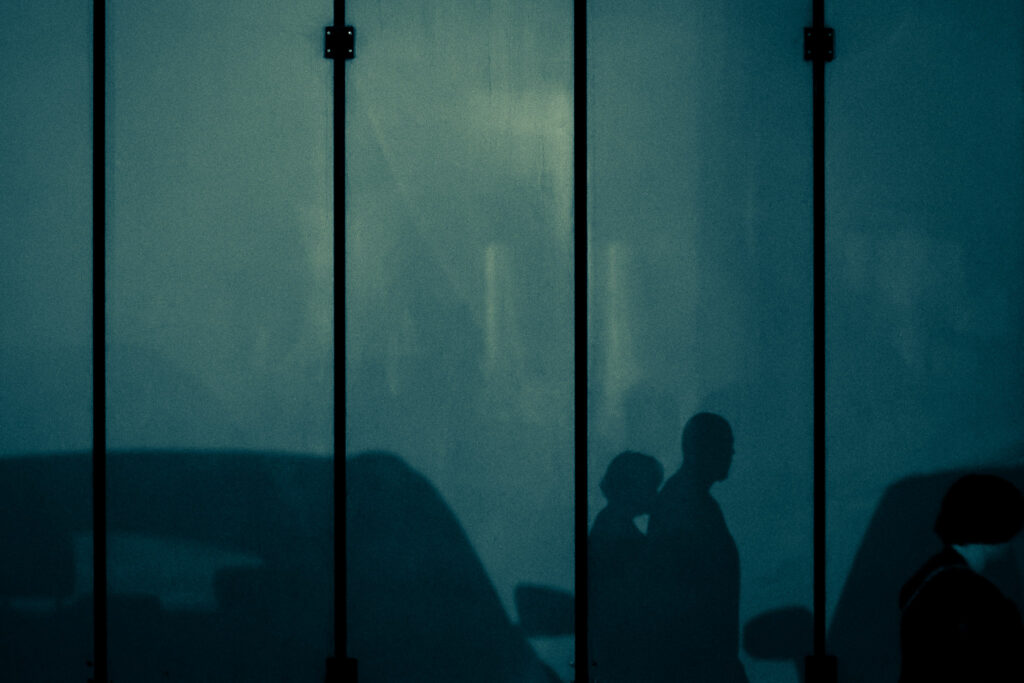
You also shoot a lot of still life and more abstract shots. Is it intentional or just evolved that way? What fascinates you about it?
Yes, in some sense it can be said that it has evolved this way, based on my own growth/search on the photography journey, but also based on, for example, the everyday situation in my hometown Pärnu.
This is partly related to the previous question and answer – to try something different. I’m fascinated by “building a frame”, arranging various components into some kind of visual whole.
Who or what has influenced you the most in photography?
My own passion and interest is probably the basis of everything that has influenced me to explore this world. I have definitely been influenced by the teachers whose photography courses I have taken part in. To the greatest extent, probably it has been Kaupo Kikkas.
In addition, the photos & films I´ve seen, exhibitions I have visited, inspiring people etc… everything that somehow feeds the mind. The world of theater, which I am part of every day, definitely has its share. And of course, an experience is a very good teacher and influencer.
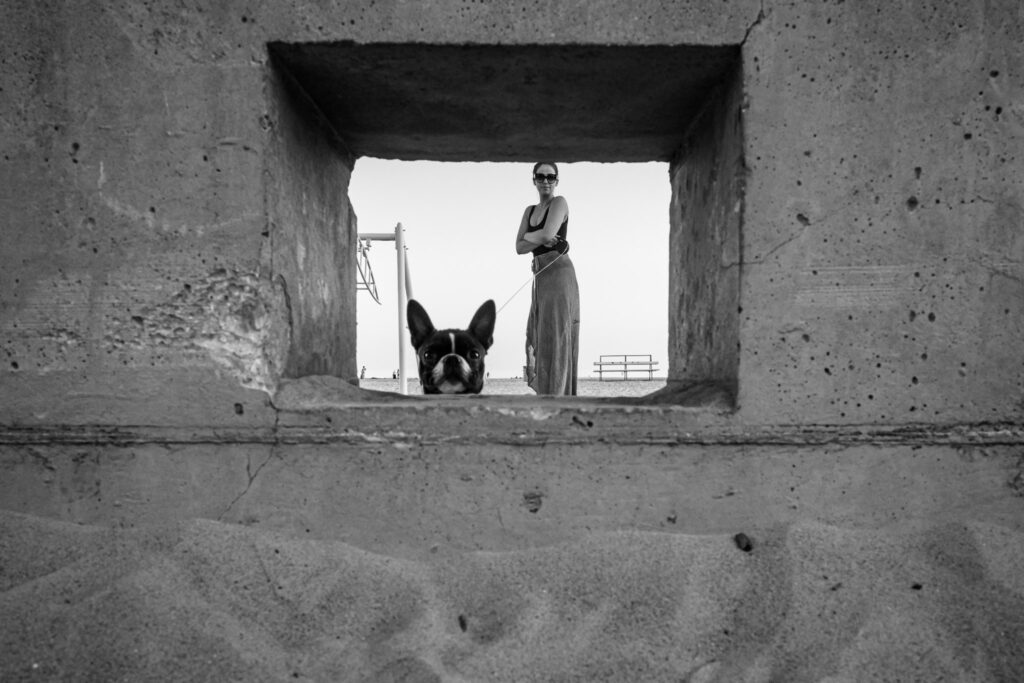
What do you usually do or where do you get an inspiration from, when you have the writers block?
I think that then you have to give yourself some time and not rush things or beat yourself up and pressure yourself in the rush of achieving results.
Maybe you should deal with a different topic in terms of photography or not pick up the camera at all for a while. In other words, you should recharge yourself with something good and stimulating – books, theater, sports, music, doing nothing etc.
Speaking of street photography, there can be days or even weeks when “the eyes are closed” – you can roam and dig and search, but no good picture comes… it’s a natural part of the process.
How much do you manage to take pictures in addition to some of your other activities and daily tasks?
Unfortunately, I have to admit that lately I do it quite rarely and even when I have time, then at this point in time I tend to do other type of photography rather then classic street photography. Mainly because one photo project is incomplete and I would like to get it done in the near future. It is related to the Pärnu beach theme outside the summer season.
Do you also put effort into post processing and how much do you use it?
In the case of street and documentary photography, I generally do only the most common post-processing operations – if necessary, I slightly correct the exposure, light temperature, crop the image a little if necessary, and sometimes I add some effects – contrast, texture, color richness.
I generally start from a specific photo and the direction it gives me as to how I would like to see the end result. In terms of post-processing, I guess I don’t have my own recognizable style, or I can’t see it myself and I haven’t paid attention to it. I don’t think heavy post-processing and use of effects make a bad image better, especially to the „skilled eye“, when it comes to street photography.

You have also made trips abroad for the purpose of photography. How has that experience been? Is your approach in such cases somehow different from when you shoot in your home country?
Yes, I have combined mini-vacations with street photography a few times in my life. These experiences have been exciting and educational.
The approach itself is no different from taking pictures at home. I’m still trying to keep my mind open and my eyes open. But based on my experience so far, I have come to realize that since I am not connected to these places in the same way as I am to Estonia, the photos taken there are also missing something. Some layer is missing. It’s like an “alien world”. I don’t know… In any case, I also have a sense of mission, that who else takes pictures of Estonia if not the photographers who live here.
Can you share some tips for beginners?
Learn the technical ABCs first and then shoot, shoot, shoot, learn, search, invent, inspire. Try to be demanding of yourself! For example, if you see an “interesting” person that you would like to capture, don’t just take a quick documenting shot, but try to quickly assess the situation and think about how the shot could be more interesting. Observe how the light is, maybe there is something in the background that would create context, or maybe there is something in the foreground that can be left in the frame and that would add depth to the photo.
Maybe you can add some colours into the frame, maybe you can go lower or higher instead, maybe you don´t need the person in the frame as a whole, but only a part of him/her or maybe only a silhouette, a shadow, a reflection… Maybe you don´t need him in the photo at all, but the woman standing behind him is a lot more interesting.
You can see more photos from Priit Loog on Instagram.
